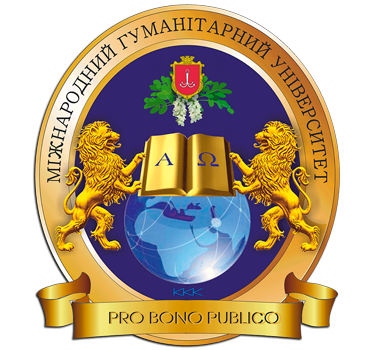THE EFFECT OF A LIBERAL REGIMEN OF INFUSION THERAPY ON HEMODYNAMICS IN PATIENTS WITH ACUTE ABDOMINAL PATHOLOGY
DOI:
https://doi.org/10.32782/2411-9164.20.1-6Keywords:
acute abdominal pathology, urgent laparotomy, perioperative infusion therapy, liberal regime, central hemodynamicAbstract
Acute abdominal pathology is assosiated with a high mortality rate. One of the main reasons for the severity of the condition of patients is the initial pathophysiological change in fluid metabolism – volume depletion. The treatment of that is prove by infusion therapy. The aim of the study is to assess the effectiveness of the liberal regime of infusion therapy based on the state of central hemodynamics. We examined 50 patients who were operated on in emergency laparatomy. Perioperative infusion therapy in all patients was proved in a liberal regimen with balanced crystalloid solutions. We examined the clinical parameters of systemic hemodynamics and measured the central and peripheral hemodynamic parameters determined by the method of integral rheography with the apparatus “Diamant”. We evaluated tissue perfusion with the apparatus “+BIOMED” also. Unexpectedly we found that the correction of volumetric exhaustion by the liberal regimen of infusion therapy in patients with acute abdominal pathology forms hypodynamic state of circulation due to tachycardia and vasospasm in the first 6 perioperative hours. We note declined of cardiac index during all observation. Moreover, the lowest values of cardiac index were at 3-d and 7-th day after surgery. It was related with rising values of systemic vascular resistance and poor tissue perfusion. Thus, the insufficient effectiveness of the liberal regime of infusion therapy was established due to the formation of a hypodynamic state of circulation by significantly increasing the systemic vascular resistance and reducing tissue perfusion throughout the entire observation period.
References
Barrow E. Current UK practice in emergency laparotomy / Barrow E., Anderson I., Varley S. Annals of The Royal College of Surgeons of England. 2014. Vol. 95 (8). Р. 599–603.
Chana P. Cohort analysis of outcomes in 69 490 emergency general surgical admissions across an international benchmarking collaborative / Chana P., Joy M., Casey N. BMJ Open. 2017. Vol. 78 (7). Р. 49–60.
Update to the high-risk patient released by RCS England. NELA Project Team. Fourth Patient Report of the National Emergency Laparotomy Audit RCoA / Iain Anderson [et al.]; Healthcare Quality Improvement Partnership as part of the National Clinical Audit Programme on behalf of NHS England and the Welsh Government, UK. – Produced by the Publications Department Royal College of Anaesthetists, London, 2018. 135 р. Dep. 23.08.18, № WC1R 4SG.
Vester-Andersen M. Mortality and postoperative care pathways after emergency gastrointestinal surgery in 2904 patients: a population-based cohort study / Vester-Andersen M, Lundstrоm LH, Mоller MH. BJA: British Journal of Anaesthesia. 2014. Vol. 112 (5). Р. 860–870.
Murray D. Improving outcomes following emergency laparotomy. Anaesthesia. 2014. Vol. 69. Р. 300–305.
Hoste E.A. Four phases of intravenous fluid therapy: a conceptual model / E.A. Hoste, K.C. Maitland, C.S. Brudney, M.G. Mythen. British Journal of Anaesthesia. 2014. Vol. 113 (5). Р. 740–747.
Myles P. Restrictive versus liberal fluid therapy in major abdominal surgery (RELIEF): rationale and design for a multicentre randomised trial Restrictive versus liberal fluid therapy in major abdominal surgery (RELIEF): rationale and design for a multicentre randomised trial / Paul Myles, Rinaldo Bellomo, Tomas Corcoran, Andrew Forbes, Sophie Wallace. BMJ Open. 2017. Vol. 7 (3). P. 153–161.
Carlisle J.B. Risk prediction models for major surgery: composing a new tune. Anaesthesia. 2019. Vol. 74. Р. 7–12.
Oliver C.M. Risk assessment tools validated for patients undergoing emergency laparotomy: a systematic review / C.M. Oliver, E. Walker, S. Giannaris, M.P.W. Grocott, S.R. Moonesinghe. BJA: British Journal of Anaesthesia. 2015. Vol. 115 (6). Р. 849–860.
Стандарти організації та професійно орієнтовані протоколи надання невідкладної допомоги хворим з хірургічною патологією органів живота (відомча інструкція) / [Березницький Я. С., Бойко В. В., Брусніцина М. П. та ін.]; за ред. Я. С. Березницького. Дніпро: Дніпро-VAL, 2008. 256 с.
Klijn E. Tissue perfusion and oxygenation to monitor fluid responsiveness in critically ill, septic patients after initial resuscitation:a prospective observational study / Klijn E., Marit H.N., Lima A. Anaesthesia. 2015. Vol. 29. Р. 707–712.






